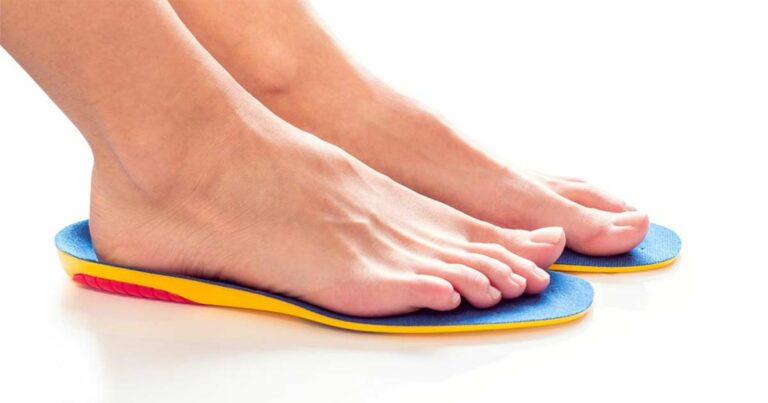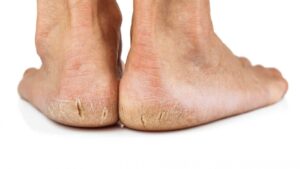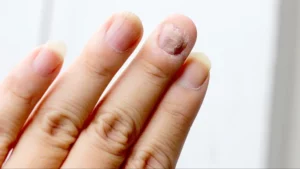- Introduction
- What Are Foot Orthotics?
- Common Foot Issues Orthotics Can Address
- Types of Orthotics in Australia
- The Orthotic Prescription Process
- How Orthotics Can Transform Your Day-to-Day Life
- Choosing the Right Footwear for Your Orthotics
- Caring for Your Orthotics
- Lifestyle Tips for Better Foot Health
- When to See a Podiatrist
- FAQs About Orthotics
- Conclusion
1. Introduction
Foot pain is very common in Australia. Whether it’s that sharp heel pain first thing in the morning, an ache around the arch when you’re heading out for a morning jog, or a persistent soreness after a long shift on your feet, it can really throw a spanner in the works of your daily routine. One of the most effective ways to manage foot discomfort and maintain good foot health is by using foot orthotics.
In this ultimate guide, we’ll take a deep dive into everything you need to know about foot orthotics: what they are, the types available, how they’re prescribed, and how they can help you overcome nagging foot pain. We’ll also discuss practical tips for fitting orthotics into your shoes, caring for them, and maintaining an overall healthy lifestyle to support long-term foot wellbeing.
2. What Are Foot Orthotics?
Foot orthotics are specialised shoe inserts designed to support, align, and improve the function of your feet. They can be custom-made by a podiatrist or purchased off the shelf. Orthotics work by redistributing the pressure across your feet, stabilising your foot position, and correcting abnormal movement patterns (like rolling your ankles in or out).
This added support can help reduce or prevent pain in your feet, ankles, knees, hips, and even your lower back. In Australia, many people turn to orthotics for relief from common conditions such as plantar fasciitis, bunions, flat feet, and general foot fatigue. While not a magic cure-all, they’re a significant component of a well-rounded foot care strategy.
3. Common Foot Issues Orthotics Can Address
Foot pain can be triggered by a variety of conditions, including injuries, genetics, and lifestyle factors. Orthotics can be beneficial if you’re experiencing any of the following:
- Plantar Fasciitis: A painful inflammation of the tissue along the bottom of your foot. If stepping out of bed in the morning sends a sharp jolt through your heel, plantar fasciitis might be the culprit. Orthotics help by supporting the arch and reducing stress on the fascia.
- Flat Feet or Fallen Arches: Some people naturally have lower arches, while others develop them over time due to weight gain or ageing. Orthotics provide the necessary arch support and reduce strain on muscles and ligaments.
- Overpronation and Supination: Overpronation means your foot rolls inward excessively, while supination means it rolls outward. Both can lead to ankle, knee, and hip issues if not corrected. Orthotics work by realigning the foot to a more neutral position.
- Bunions and Hammertoes: These structural deformities can cause intense discomfort, especially when walking or wearing shoes. Orthotics relieve pressure on painful areas, slowing the progression of the deformity.
- High Arches: While flat feet get a lot of attention, high arches can also be problematic. Orthotics can fill in the gap under your arch, offering stability and helping disperse pressure more evenly.
4. Types of Orthotics in Australia
When you first start looking into foot orthotics, you’ll likely come across two main categories:
- Off-the-Shelf Orthotics
These inserts are pre-manufactured to fit an “average” foot shape. You’ll find them at local pharmacies, sports stores, and online. While off-the-shelf orthotics can be a budget-friendly and convenient option, they often lack the customisation needed for more severe or unique foot issues. - Custom Orthotics
Custom-made orthotics are prescribed by a podiatrist. They involve a thorough assessment of your gait, foot structure, and specific needs. The podiatrist will take a mould or 3D scan of your feet, then design orthotics using materials like EVA foam, polypropylene, or carbon fibre. Though they cost more than off-the-shelf options, custom orthotics usually offer better long-term outcomes, especially if you have chronic foot pain or a complex condition.
Within these two categories, you’ll find specialised orthotics designed for different activities—like running, standing on hard surfaces for extended periods, or accommodating medical conditions such as diabetes.
5. The Orthotic Prescription Process
If you decide to go the custom route, here’s a quick rundown of what to expect:
- Initial Consultation: Your podiatrist will chat with you about your medical history, lifestyle, and any foot-related concerns. They’ll also examine your feet, knees, and hips to look for alignment issues.
- Gait Analysis: You may be asked to walk or run on a treadmill while the podiatrist observes your foot mechanics. In some clinics, advanced technology like force plates or video motion analysis is used for a more detailed assessment.
- Casting or Scanning: Next, the podiatrist will either take a plaster mould of your feet or use a digital 3D scanner. This ensures the orthotics match every contour of your feet perfectly.
- Fabrication: Based on the assessment data, your custom orthotics are designed to address your specific needs. It can take anywhere from a few days to a couple of weeks for the lab to craft them.
- Fitting and Follow-up: Once your orthotics are ready, you’ll have another appointment to ensure they fit well. Minor tweaks or adjustments may be needed to make sure you’re completely comfortable.
6. How Orthotics Can Transform Your Day-to-Day Life
While orthotics aren’t a silver bullet for every foot problem, they can absolutely transform your daily life. Many Aussies report:
- Reduced Pain: Orthotics distribute pressure more evenly and relieve stress on problem areas, reducing chronic foot, ankle, and even knee pain.
- Better Posture: By keeping your feet properly aligned, orthotics can encourage better overall posture. This can reduce strain on your back and hips.
- Enhanced Sports Performance: Athletes and fitness enthusiasts often notice improved stability and efficiency in their stride, helping prevent injuries and boost performance.
- Increased Comfort: Standing or walking for long periods becomes far less taxing when your feet are well-supported.
In essence, orthotics can help you get back to doing the things you love—whether that’s chasing the kids around, going for beach runs, or simply enjoying a pain-free walk around your neighbourhood.
7. Choosing the Right Footwear for Your Orthotics
No matter how brilliant your orthotics are, they won’t do you any favours if they’re forced into ill-fitting shoes. Here are some tips for selecting footwear that plays nicely with your inserts:
- Size and Fit
Always ensure there’s enough room in the toe box to accommodate both your foot and the orthotic. Your toes shouldn’t feel cramped, and the shoe should provide ample arch and heel support. - Removable Insoles
Many quality shoes come with removable insoles. Being able to remove the existing insole and replace it with your orthotic can drastically improve both comfort and effectiveness. - Stable Heel Counter
Look for shoes with a firm heel counter—the back part of the shoe that cups your heel. This helps reduce excessive foot movement and ensures your orthotic stays in place. - Appropriate Design for Activity
If you’re a runner, opt for shoes specifically designed for running, ensuring they accommodate your orthotics without feeling restrictive. For work, especially if you stand or walk on hard floors, look for footwear marketed as “occupational” or supportive with shock-absorbing soles.
8. Caring for Your Orthotics
Proper care ensures your orthotics last longer and remain effective:
- Cleaning: Gently wipe them with a damp cloth or mild soap if needed. Avoid soaking them in water or using harsh chemicals, which can damage the material.
- Drying: Let them air-dry naturally. Placing them in direct sunlight or using a heater can cause warping.
- Inspection: Regularly check for wear and tear, such as cracks or flattened areas. If your orthotics aren’t providing the same level of support they once did, it’s probably time for a review.
- Rotation: If you have more than one pair of orthotics (e.g., a dress pair for work shoes and a sport pair for running shoes), rotate them to ensure even wear and tear.
By taking these steps, you can keep your orthotics in prime condition for years to come.
9. Lifestyle Tips for Better Foot Health
Beyond wearing orthotics, there are plenty of lifestyle habits that can help keep your feet in top nick:
- Stretch and Strengthen
Incorporate foot and ankle exercises into your daily routine. Simple moves like calf stretches, toe curls, and ankle rotations can help maintain flexibility and strengthen supporting muscles. - Maintain a Healthy Weight
Every extra kilo you carry adds extra stress to your feet. A balanced diet and regular exercise can help you manage your weight, reducing the load on your lower limbs. - Vary Your Activities
If you’re a runner, try mixing in low-impact exercises like swimming or cycling. This helps avoid overuse injuries and gives your feet a break from repetitive stress. - Give Your Feet a Break
If you stand for hours at work, try to take short breaks to sit down or elevate your feet. Even a quick stretch every hour can make a difference in preventing fatigue.
10. When to See a Podiatrist
It’s always a good idea to consult a podiatrist if:
- You’ve been experiencing persistent foot, ankle, or knee pain that doesn’t improve with rest or simple remedies.
- You notice deformities, like worsening bunions or hammertoes, or you’re dealing with chronic conditions such as diabetes or arthritis.
- Your shoes wear out unevenly—a sign you might have a gait issue that needs correction.
- You develop corns, calluses, or wounds that are slow to heal.
Early intervention can prevent minor niggles from morphing into major problems. A qualified podiatrist can pinpoint the exact cause and recommend tailored treatments, including orthotics.
11. FAQs About Orthotics
1. Are foot orthotics covered by Australian health insurance?
Many private health funds offer rebates for custom orthotics if you have extras cover, but the amount varies. Check your policy details or speak to your insurer directly to find out what’s included.
2. How long do orthotics last?
Depending on the materials used and your day-to-day activities, a high-quality pair of custom orthotics can last anywhere from 1–5 years. Regular check-ups with your podiatrist will help determine if they need replacing or adjusting.
3. Can children use orthotics?
Yes. Children with specific foot alignment issues, such as severe flat feet or overpronation, can benefit from orthotics. Early intervention can guide proper foot development and potentially ward off future problems.
4. Will I need a break-in period?
Most people need at least a couple of weeks to adjust to new orthotics. Start by wearing them for a few hours a day, gradually increasing the time as your feet adapt.
5. Can I transfer my orthotics between different pairs of shoes?
Yes, as long as the shoes have sufficient space and support structure for the orthotics. However, it’s often best to have multiple pairs if you engage in varied activities.
12. Conclusion
Foot orthotics can be an absolute game-changer when it comes to managing pain, improving alignment, and enhancing your overall mobility. Whether you’re battling plantar fasciitis, dealing with the aftermath of a sports injury, or simply want to feel more comfortable during your daily activities, there’s a good chance that orthotics can help you find relief.
Remember, it’s crucial to seek advice from a qualified podiatrist if you have persistent discomfort or suspect a serious issue. They’ll guide you through the entire process—from assessing your foot health and recommending the right type of orthotic, to ensuring it fits seamlessly into your lifestyle. With the proper support, sensible footwear, and a proactive approach to foot health, you’ll be well on your way to pain-free days and a more active, fulfilling Aussie lifestyle.










